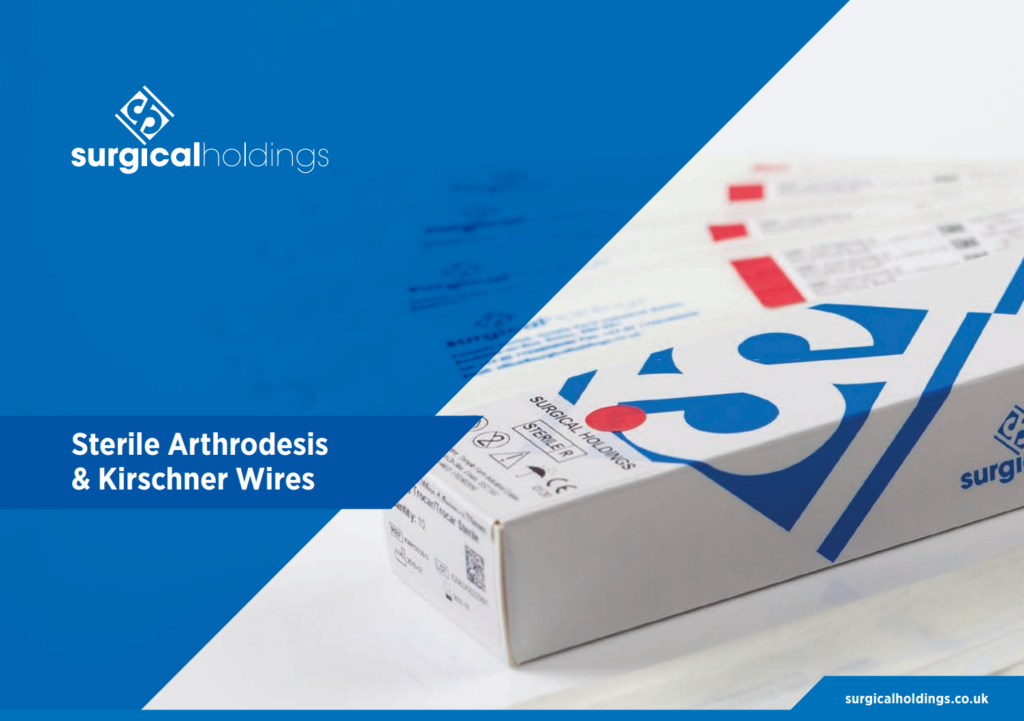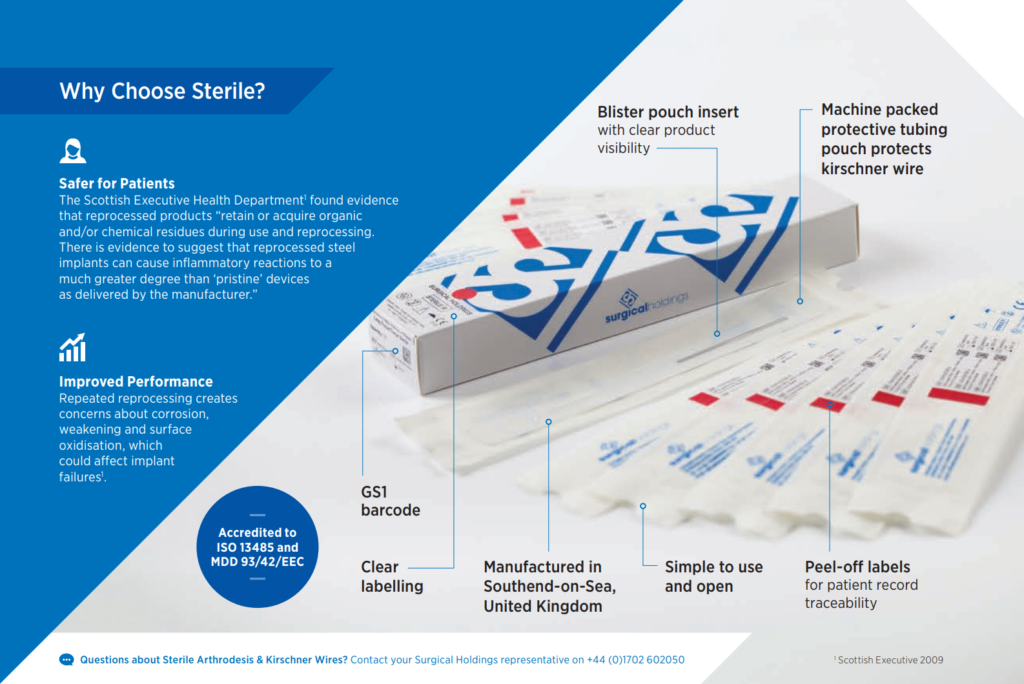in General
In the Spotlight: K-Wires
We’re taking some time to look at one of our simplest yet most popular products – Kirschner wires (K-wires). In this blog post you’ll find heaps of resources and information as Product Manager Becca shares some insight to some commonly asked questions:
How are K-Wires Made?
“We keep stock of bars of European grade stainless steel in our factory in Southend-On-Sea. Our highly skilled technicians then cut each wire down to size and hand sharpen each trocar tip. If the wire requires a thread we then use a machine to individually thread each wire. The details are then processed through the system, all materials that were used are logged for our traceability reasons and then processed through for sterilization. During this time they are individually machine packed with protective tubing and blister pouches to protect the wires and packaged accordingly, the packaging usefully includes several patient labels for the hospitals use of patient record traceability. The packaging of our sterile wires will always include product number, product description, expiry date (5 years), manufacturing date and the GTIN barcode. We hold all popular sizes in stock, ready for same-day dispatch.”
How Popular are Sterile K-Wires?

“Sterile wires are more popular than ever now, as predicted, the regulations are starting to change and, in some countries including Scotland, pre-sterile is now mandatory. The Scottish Executive Health Department found evidence that reprocessed products retain or acquire organic and/or chemical residues during use and reprocessing. There is evidence to suggest that reprocessed steel implants can cause inflammatory reactions to a much greater degree than ‘pristine’ devices as delivered by the manufacturer. Since Scotland has made this mandatory many UK hospitals are following along with many hospitals in Europe asking us for sterile stock. Customers find they can be more flexible with stock, and have a wide range of sizes read for surgery at any time. Sterile also ensure they are not damaged, are sharp and clean ready for operations.”

What are the wires used for?
“They are so versatile! For example, orthopaedics use them for holding fractures in place or aiding the reduction of fractures. They can also be used as an implant – so left in the patient to hold broken bones in place. Sometimes they are removed after a period of time, sometimes they stay implanted forever!”
Our K-Wire PM Becca shows the wires in more detail on this video.
Our sterile instructions for use (IFU) and non-sterile IFU are both available for download, and if you’d like to take a factory tour you can see the wires being manufactured in our workshop in Southend-on-Sea.
Thank you, Becca, for answering our k-wire questions!
For more information about anything in this blog post please contact us on +44 (0)1702 602050 or email: info@surgicalholdings.co.uk.
